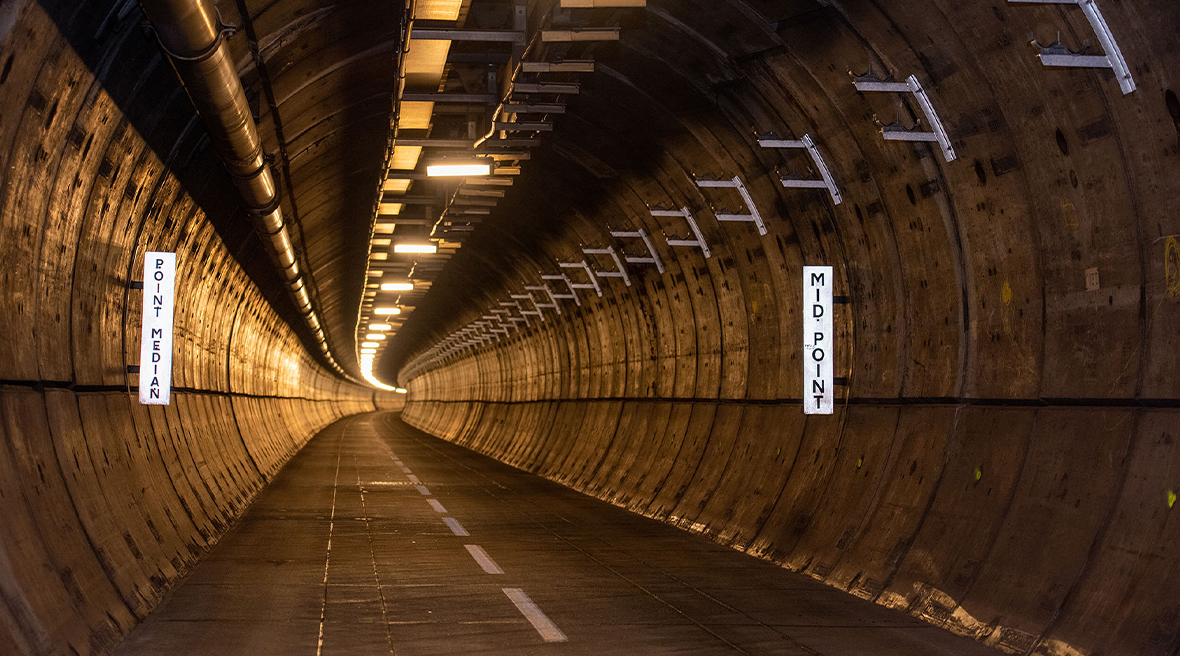ISABEL RUBIO ARROYO | Tungsteno
The Channel Tunnel is recognised by the American Society of Civil Engineers as one of the Seven Wonders of the Modern World. Also known as the Eurotunnel, it connects England and France and is one of the longest undersea tunnels on the planet. We explore the details of the construction of this and other pharaonic tunnels, such as the Seikan and Tokyo Bay tunnels, both in Japan.
Seikan Tunnel
Crossing southern Switzerland, the Gotthard Base Tunnel is one of the most amazing engineering feats on the planet. At 57 kilometres, it is the longest railway tunnel in the world. It is followed by the Seikan Tunnel, which is not only the second longest railway tunnel in the world, but also the longest with an underwater section. Located in Japan, it links the islands of Honshu and Hokkaido. It is 53.85 kilometres long, 23 km of which are under the Tsugaru Strait.
"In 1954, a typhoon sank five ferry boats in Japan’s Tsugaru Strait and killed 1,430 people," says the International Tunnelling and Underground Spaces Association (ITA-AITES). In response to public outrage, the Japanese government sought a safer way to cross the dangerous strait. "With such unpredictable weather conditions, engineers agreed that a bridge would be too risky to build. A tunnel seemed a perfect solution."
Ten years later, work began on what would be "the longest and hardest underwater dig ever attempted." Construction was completed in 1988. Engineers managed to drill and blast through a seismically active area where they could not use a tunnel boring machine because of the unpredictable nature of the rock and soil. Up to 3,000 people worked on the tunnel at any one time, and 34 lives were lost as a result of cave-ins, flooding and other mishaps. The main tunnel is three storeys high, 284 metres below sea level and is one of the most ambitious engineering feats of the 20th century.
The Gotthard Base Tunnel is one of the most amazing engineering feats on the planet. Credit: Railways Explained
Channel Tunnel
In 1987, French President François Mitterrand and British Prime Minister Margaret Thatcher announced the start of construction of the Channel Tunnel. It was inaugurated on 6 May 1994 and is 50 km long, of which 38 km is located under seabed. To construct this infrastructure, also known as the Eurotunnel, workers used several massive tunnel boring machines, hand-operated excavators and roadheaders (excavators used to create large underground chambers). "Every generation has to do something exciting that will affect the future. This is wonderful, even better than I thought it would turn out," Thatcher said of the tunnel.
The megastructure, which links Folkestone in Kent, England, with Coquelles in Pas-de-Calais, France, is actually three parallel tunnels. "Trains go through two larger tunnels. A smaller service tunnel—used for ventilation and access—runs between the two train tunnels," explains the Institution of Civil Engineers (ICE). Passengers can travel through the tunnel in their own vehicles, which are loaded into special carriages. The journey takes only about 35 minutes and is made by trains that are 100% electric, according to Le Shuttle, the high-speed rail service.
2024 marks 30 years since the opening of the Channel Tunnel. Credit: Practical Engineering
Tokyo Bay Tunnel
The world's third longest undersea tunnel is also in Japan. The Tokyo Bay Aqua-Line is a 15.1-kilometre highway project linking the city of Kawasaki with the city of Kisarazu on the Boso Peninsula. "The Aqua-Line consists of a 9.5-kilometre shield tunnel (the Tokyo Bay Tunnel) and a 4.4-km bridge from an artificial island to Kisarazu landing," says ITA-AITES.
Construction began in 1989, after 20 years of research. It took nine years to complete and was a complex civil engineering project, with challenges such as dealing with water pressure and soil stability. Today, it takes about 15 minutes to drive from one city to the other on the Aqua-Line. The alternative route, on the other hand, is 100 kilometres long and crosses the centre of Tokyo. According to ITA-AITES, the Aqua-Line helps ease traffic congestion in the heart of the Japanese capital.
The Aqua-Line consists of a bridge and an underwater tunnel running under Tokyo Bay. Credit: Driving Nippon
The Seikan Tunnel, Channel Tunnel and Tokyo Bay Tunnel are three of the longest undersea tunnels on the planet. Other such tunnels on this list include the Bømlafjord and Eiksund tunnels in Norway, the Sydney Harbour Tunnel in Australia and the Thames Tunnel in the UK. They all have one thing in common: not only do they cross large bodies of water, such as straits, bays or rivers, but they are also some of the most complex engineering projects in the world.
· — —
Tungsteno is a journalism laboratory to scan the essence of innovation.
